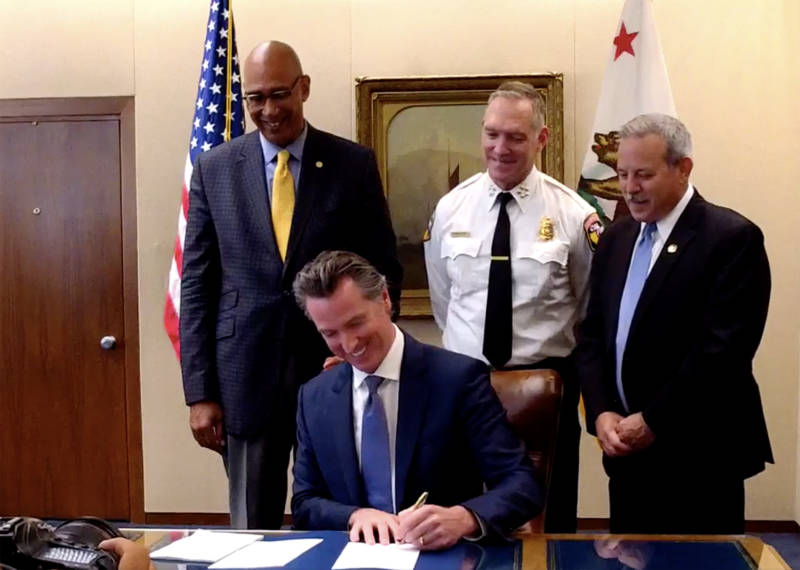Gov. Gavin Newsom signed a complex wildfire liability bill into law Friday morning.
The passage of AB 1054 is a big win for Newsom, who was elected governor just days before PG&E equipment sparked the Camp Fire, which raged across Butte County, killing 85 people. Just weeks later, the utility entered into bankruptcy protection. Newsom has been highly critical of the power company. But he also noted the problem of utility-caused wildfires is bigger than just one company.
Under the plan, utilities and ratepayers will pay into a fund that utilities could access if a fire caused by their equipment resulted in more than $1 billion in property damage. The bill also imposes several safety conditions before utilities could participate in the system, such as not allowing PG&E to fully participate in the fund until it exits bankruptcy. If its equipment is found to have caused a fire before then, the utility would not be able to fully access the fund.



